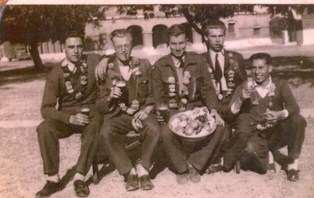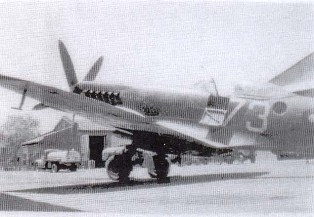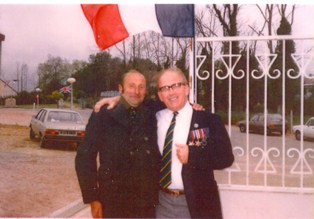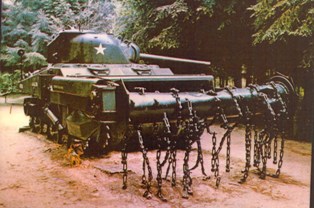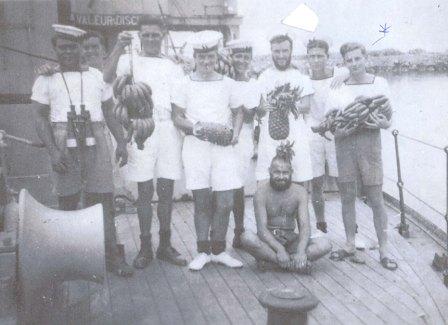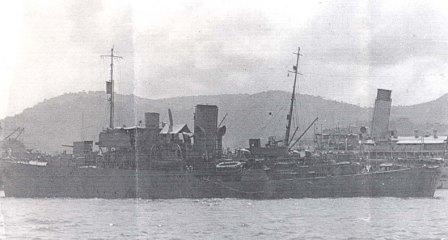
Private 19774 William Odell
6th Northamptonshire Regiment
Killed in Action 23rd March 1918
Son of William and Sarah Odell, of 102, High St., Hemel Hempstead; husband of Louisa Odell, of 82, High St., Hemel Hempstead, Herts.
Pozieres Memorial, Panel 55.
Born: Hemel Hempstead.
Enlisted: Watford.
William Odell's name on the Pozieres Memorial
(Photo: Richard Grayson, 27th March 2012.)
On 23rd March 1918, William Odell was killed in action; he was 33 years old. He served in the 6th Northamptonshire Regiment and had enlisted in Watford. He was born in Hemel Hempstead and was the son of Sarah and William Odell who lived at 102 High Street in Hemel Hempstead; he had lived with his wife, Louisa Odell, at 82 High Street Hemel Hempstead. His name appears on the Pozieres and Boxmoor Memorials.
The few months that led up to the end of World War One saw many desperate German advances try to take as much land as possible from the Allied forces. The military offensive began on the 21st May 1918 and was split into many battles from Lys (April), Aisne (June), Noyon-Montdidier (June) and Marne (July and August). The first phase was nicknamed Kaiserschlacht and is also known under the codename the Michael Offensive; it was launched against the British lines between Cambrai, St Quentin and La Fère, situated on the Somme battlefield. It was supposed to split the French and British Armies and prevent reinforcements getting through from the North. Initially successful, it captured lots of Allied land but due to exhaustion of the men and the destruction of many bridges and railways, the attack slowed down in a matter of days.
It is most likely that William Odell was killed in the Battle of St Quentin, a German-occupied town. The battle was on the 23rd and 24th March 1918. This battle included fighting around Mennessis and Faillouel on the 23rd - which is possibly when William Odell was killed. It is recorded that on these days, three companies of the Northamptonshire Regiment were at Montagne and Jussy Bridges in Remigny, with one Bedfordshire company. The Crozat Canal was held by Allied forces. It is on the outskirts of the French town St Quentin and was surrounded by the enemy very suddenly in the early morning and the British were unaware due to fog, therefore allowing the Germans to cross. Fortunately, due to good leadership, the British were able to fight back under Lieutenant Herring, whom is favourably mentioned in sources and won a Victoria Cross for his actions. He helped the men hold a counter-attack and recapture their position, as well as capturing 20 prisoners and six machine guns. He also held off many other attacks using a Lewis gun (a light manoeuvrable machine gun); therefore, the Northamptonshire Regiment is recognised as being very important to this battle.
The war diary states that, on the 21st March, the Battalion left Caillouel and moved into position, east of Jussy-Faillouel road. At 4pm, they moved forward to take over the switch line which had Ly-Fontaine on the right (where a quarry was being used for an army headquarters), and Gibercourt on the left. At 10:30pm they withdrew to the west of St Quentin’s canal at Montagne Bridge and took up position of a railway embankment. They had the 7th Bedford’s on the right and the 11th Royal Fusiliers on the left.
On the 22nd of March, at 5:30am, Montagne Bridge was blown up using trench-mortar shells but it was only partially successful. All battalions had been given orders to destroy all canal bridges, but due to poor preparation, lack of supplies and poor positioning there was a distinct lack of damage to the bridges. The battalions’ job was to prevent the Germans from crossing the canal. Unfortunately for them, due to the canal’s position, machine guns were aimed at the Royal Fusiliers positions making movement difficult from 10am onwards. Throughout the afternoon, the battalion were bombed heavily by enemy aircraft. The enemy did try to cross the canal at 6pm and were successful, until a counter attack from B company pushed them back - and the Calvary started to arrive to reinforce them. The Battalions lines were checked so that they ran from the bridge to 200 yards south-east of the Montagne bridge.
On the 23rd of March 1918, the day that William Odell is recorded as being killed in action, the enemy attacked at 7:30am against both the Royal Fusiliers and the 7th Bedford’s, pushing both flanks back. At 9:30am they held their positions at two bridges and continued to do so through heavy fighting, until they were ordered to withdraw to the railway embankment an hour later. Reinforcements of Strathcoma’s Horse arrived - this was an armoured regiment of the Canadian army- but after seeing the new German positions as the Germans had crossed the bridge, they were withdrawn. At midday, the Battalion withdrew to Bois- des- Frieres, but they were shelled violently by the enemy who fired from Remigny and attacked from the west of Faillouel. Some of the soldiers were captured and taken as prisoners of war, including Lieutenant Herring, when they tried to retake positions; due to heavy machine gun fire and lack of communication, the men struggled to survive. At 3pm the Battalion withdrew through Villequier-Aumont and marched onto billets (sleeping quarters) at Caillouel.
It is believed that only around 200 Northamptonshire’s, 200 Bedfordshire’s and 26 Fusiliers survived, which means that it is possible that around 200 men at least died, if not up to 400, including William Odell.
Sources:
- 6th Northamptonshire Regiment War Diary, Catalogue Reference: WO 95/2044
- http://www.greatwar.co.uk/battles/index.htm
- http://www.enfield.gov.uk/news/article/887/famous_five_s_heroism_the_pride_of_enfield
- http://www.dacorumheritage.org.uk/first-world-war-database/hemel-hempstead-soldiers-details/hemel-hempstead-war-memorial-3/
- https://en.wikipedia.org/wiki/Operation_Michael#Battle_of_St._Quentin.2C_21.E2.80.9323_March
- http://www.rascrctassociation.co.uk/herring.html
- http://www.salhs.org.uk/folders/Memorium/page19.html
- http://www.britishnewspaperarchive.co.uk/
- http://www.roll-of-honour.com/Hertfordshire/KingsLangley.html
- http://www.roll-of-honour.com/Hertfordshire/Boxmoor.html
- http://www.roll-of-honour.com/Hertfordshire/ApsleyJohnDickinson.html
- https://books.google.co.uk/books?id=DZo7AwAAQBAJ&pg=PT111&lpg=PT111&dq=montagne+bridge+battle+1918&source=bl&ots=wKWKyog-1S&sig=Vg-1NLq4QGifCXDOQdrHVB5srpg&hl=en&sa=X&ved=0ahUKEwiWx-CToevUAhUlBcAKHSOODrIQ6AEIUzAM#v=onepage&q=montagne%20bridge%20battle%201918&f=false
- https://books.google.co.uk/books?id=sXy-BAAAQBAJ&pg=PA131&lpg=PA131&dq=montagne+bridge+battle+1918&source=bl&ots=DqX7iHxdWX&sig=ETj42m61ENAHzMxWeVa-Ry_KYvk&hl=en&sa=X&ved=0ahUKEwiWx-CToevUAhUlBcAKHSOODrIQ6AEIVjAN#v=onepage&q=montagne%20bridge%20battle%201918&f=false
- https://books.google.co.uk/books?id=un--BAAAQBAJ&pg=PA475&lpg=PA475&dq=montagne+bridge+battle+1918&source=bl&ots=ONuw58LqZd&sig=zhAs0GNlRGALGptybmRHAzwXUQ4&hl=en&sa=X&ved=0ahUKEwiWx-CToevUAhUlBcAKHSOODrIQ6AEIZDAP#v=onepage&q=montagne%20bridge%20battle%201918&f=false
- http://1914-1918.invisionzone.com/forums/index.php?/topic/65077-6th-bn-nothamptonshire-regiment/
- https://drive.google.com/file/d/0B1B57_VTQrA5ZHA5QjhGX3dSQXc/view?ts=595243ca – war diaries
By Eleanor Clark
27th June 2017
